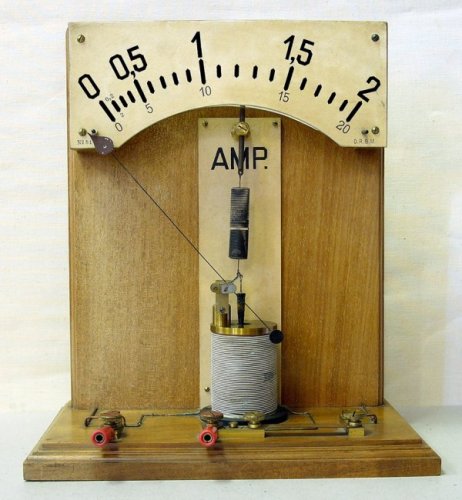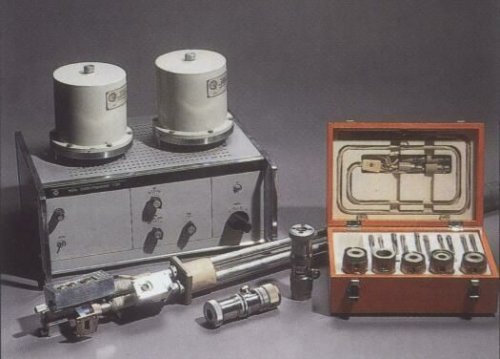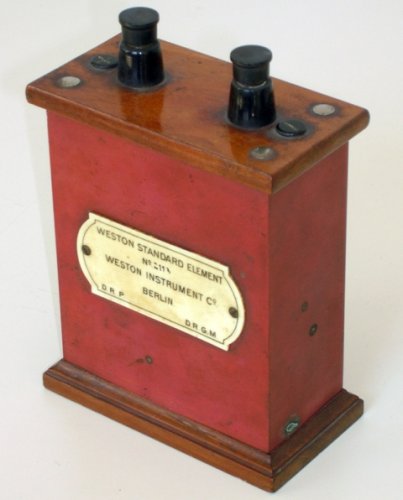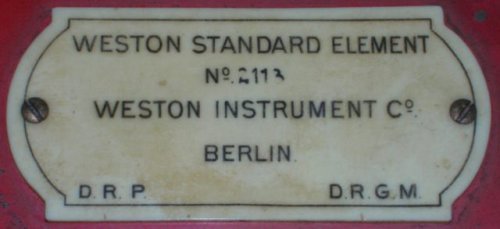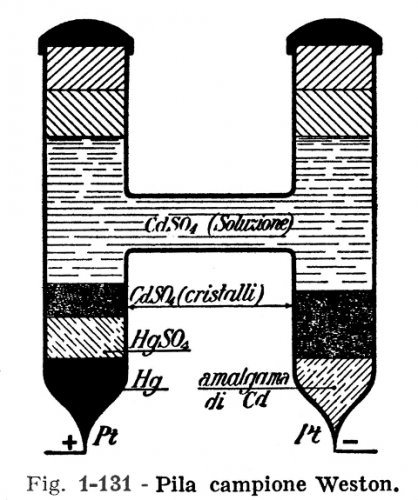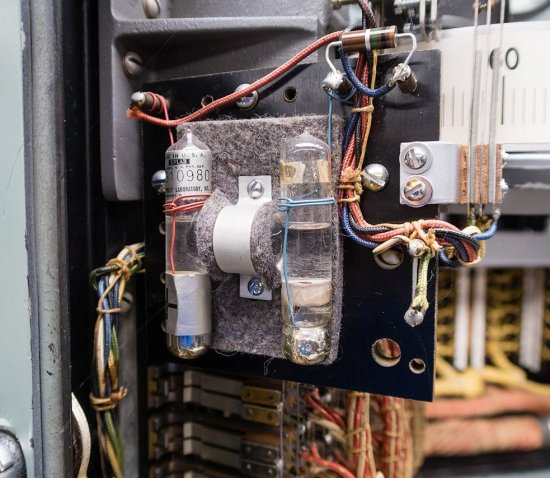Standards for electrical units and exemplary measures
To measure a value means to compare it with another homogeneous value conventionally accepted as a unit. As a result of such a comparison or measurement of a quantity, a certain named number is obtained, which is called a numerical value or simply the value of the measured quantity in the accepted unit of measurement.
In order to compare the measured value with the unit of measurement, in most cases it is necessary to represent the unit of measurement in the form of a specific material sample called measure.
Measurements performed with the currently highest accuracy (so-called metrological accuracy) and used to compare other measures of this type with them are called standards. Note that the units of measurement of some quantities by their very nature cannot have a standard or measure, that is, a material concrete sample. For example, units of such quantities as speed, power, work, amperage, time, etc., have no standards.
The units of some quantities that have no material, artificially created standards are determined by natural, natural standards.For example, a unit of time — a second — is related to the process of rotation of the earth, millionths of a meter — microns — is determined by the wavelength of a certain color, a unit of heat, a calorie, is determined by the calorific value of chemically pure benzoic acid, etc.
The selection of the unit of measurement still does not allow to fully make measurements, that is, to compare the measured value with the unit of measurement. Therefore, to produce measurements, it is necessary to reproduce the units of measurement in real terms. Such a real reproduction of units makes it possible to create some international units approaching absolute with the highest possible metrological accuracy. There are two types of real sample units: standards and exemplar measures.
Standards for units of electrical quantities
Standards — these are samples of materials that serve only for comparison with them and verification of sample measures. These standards are stored under special conditions to ensure that their values remain unchanged over time. Sample measures are used to calibrate all types of working measures and measuring instruments.
The main standards for electrical units are the standards for current strength, electromotive force and electrical resistance.
Distinguish between a primary standard, which is of higher accuracy than other standards reproducing units of measurement of the same physical quantity, and a secondary standard, the value of which is determined both directly from the primary standard and through other secondary standards or from a reference method .
The main standard approved in the established manner as a state standard is called a state standard.Secondary standards are divided into witness standards, copy standards and work standards.
The witness standard serves to verify the safety of the primary standard and its replacement in case of damage or loss. The reference standard serves for direct comparison with the primary standard and its replacement during the most accurate metrological work. The working standard is intended for ongoing metrological work on the transfer of measurement units to sample measures and sample measuring devices (devices with the highest accuracy).
Distinguish:
- a single standard that reproduces the unit of measurement without the involvement of other similar standards (reference weight, reference resistance coil);
- group standard, representing a group of reference measures and measures, instruments used in general to improve the accuracy of a unit of measurement (for example, a volt primary group standard consisting of 20 normal saturated elements, a primary group standard for measuring electrical capacitance consisting of of 4 capacitors) …
A reference method is a method of reproducing units of measurement using permanent properties of a substance or a physical constant replacing the primary standard. A reference setup is a measurement setup designed to apply a reference method.
Amperage standard
It was not possible to apply the current unit standard as a material sample. However, based on chemical action of electric current it was possible to establish an easily reproducible current effect, independent neither of time nor of place, which made it possible to establish the following conditions for the international unit of current strength: the international ampere is the strength of an unchanged electric current which, passing through an aqueous solution of silver nitrate releases 0.00111800 grams of silver per second. According to international regulations, the international ampere is reproduced using a platinum cathode voltmeter with a silver anode.
Electric current standard
The standard of electrical resistance
Egalon Oma is an international oma. It's international resistance, converted into direct electric current at the temperature of melting ice by a column of mercury of the same cross-section throughout, 106,300 cm long and 14.4521 grams mass. The resistance standard consists of a glass tube filled with mercury during the measurement.
Standard EMF
The standard for electromotive force is the international volt. International volt — The voltage across a resistance of 1 international ohm when a current of 1 international ampere flows through it. However, reference current source being played electromotive force, equal to one international volt, cannot be created.
In practice, the international volt standard is the so-called Weston International Normal Items, creating an electromotive force that does not change with proper use and storage, equal to 1.01830 V at a temperature of 20 ° C.
Weston element
The positive electrode of the international volt is mercury and the negative electrode is cadmium amalgam. A paste of powdered mercury sulfate mixed with crystalline cadmium sulfate is placed over the mercury.On top of the cadmium amalgam, as well as on the paste, crystals of cadmium sulfate are placed. The entire interelectrode space is filled with a saturated solution of cadmium sulfate.
In order not to spoil the normal element when it is used, it is necessary to avoid a strong current that can cause the phenomenon of polarization of the element. The highest allowable current for a normal element is 0.000005 A. Therefore, when a normal element is included in a circuit, it is recommended to connect a resistance of the order of 200000 ohms in series with it.
State standards of Russia are stored in the State Scientific Metrology. centers of Gosstandart (St. Petersburg, Moscow, Novosibirsk), Germany — in RTV (Phisikalisch -Technische Bundesanstalt, Braunschweig), USA — in NIST (National, Tnstitute Standarts and Technology, Gaithersberg).
Sample measures
For practical purposes, sample measures are most often used. They are produced in an easy-to-use form. In terms of accuracy, they naturally fall short of the standards. However, when used and stored properly, this accuracy is adequate for practical needs.
Model resistances are produced of manganin wire, as manganin has many significant advantages over other materials:
-
its temperature coefficient is practically zero;
-
the resistance is large enough;
-
thermoelectromotive force in contact with copper is also practically zero;
-
previously aged manganin does not change its resistance value over time.
In order for the sample resistance to have as small an inductance as possible, the winding of its coil is made bifilar… To do this, all the wire wound on the spool is bent in the middle and then wound evenly from the end. In this method of winding, the currents in two adjacent turns flow in opposite directions, thus their magnetic fields are equal and opposite and therefore almost cancel each other. Therefore, the inductance of the bifilar wound coil is almost zero.
Model resistors have two pairs of clamps. Each pair of clamps extends from the same end of the resistor. Two clamps—more massive—are designed to include a sample resistance in the circuit. The other two — less massive — are used for compensation measurements. So-called resistance boxes are often used as sample resistances.

